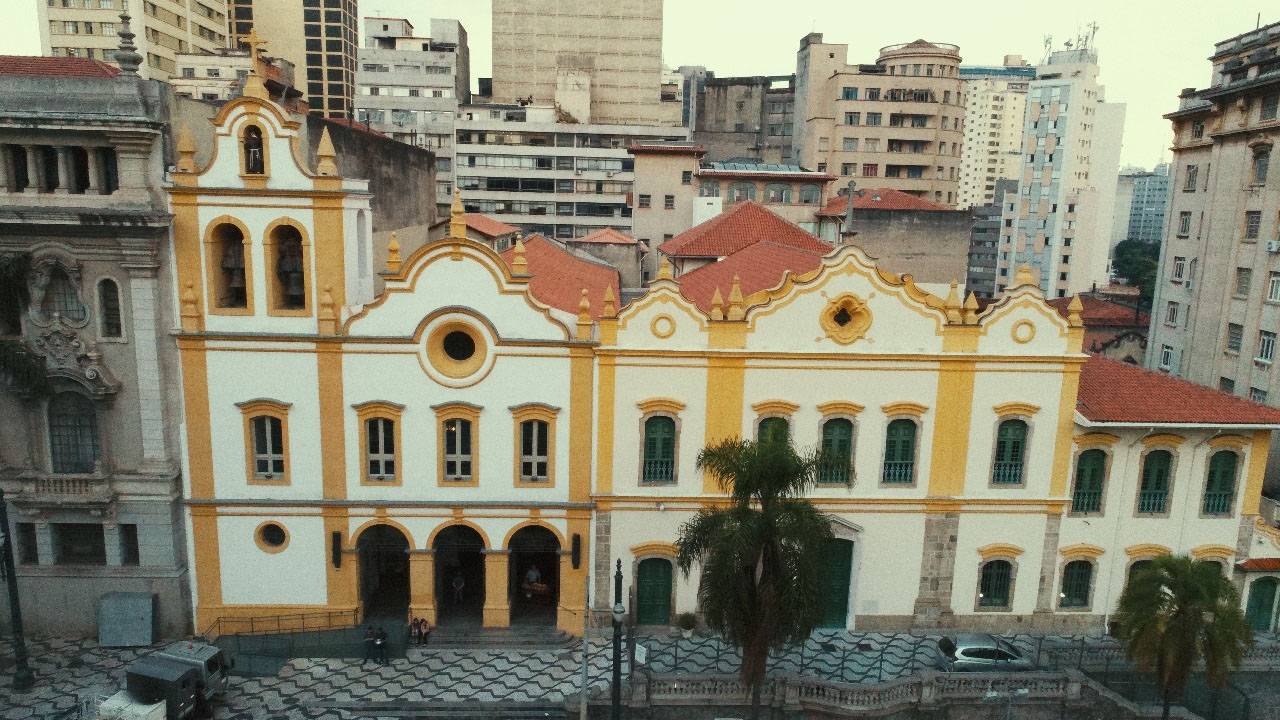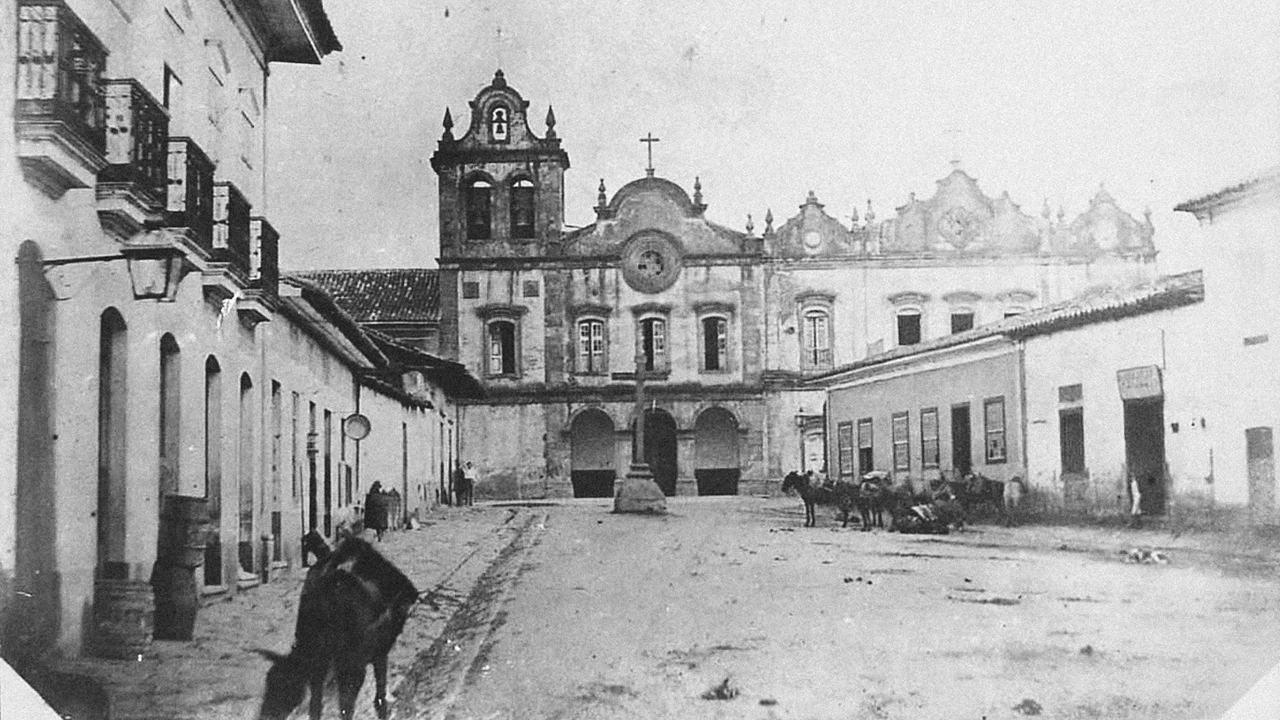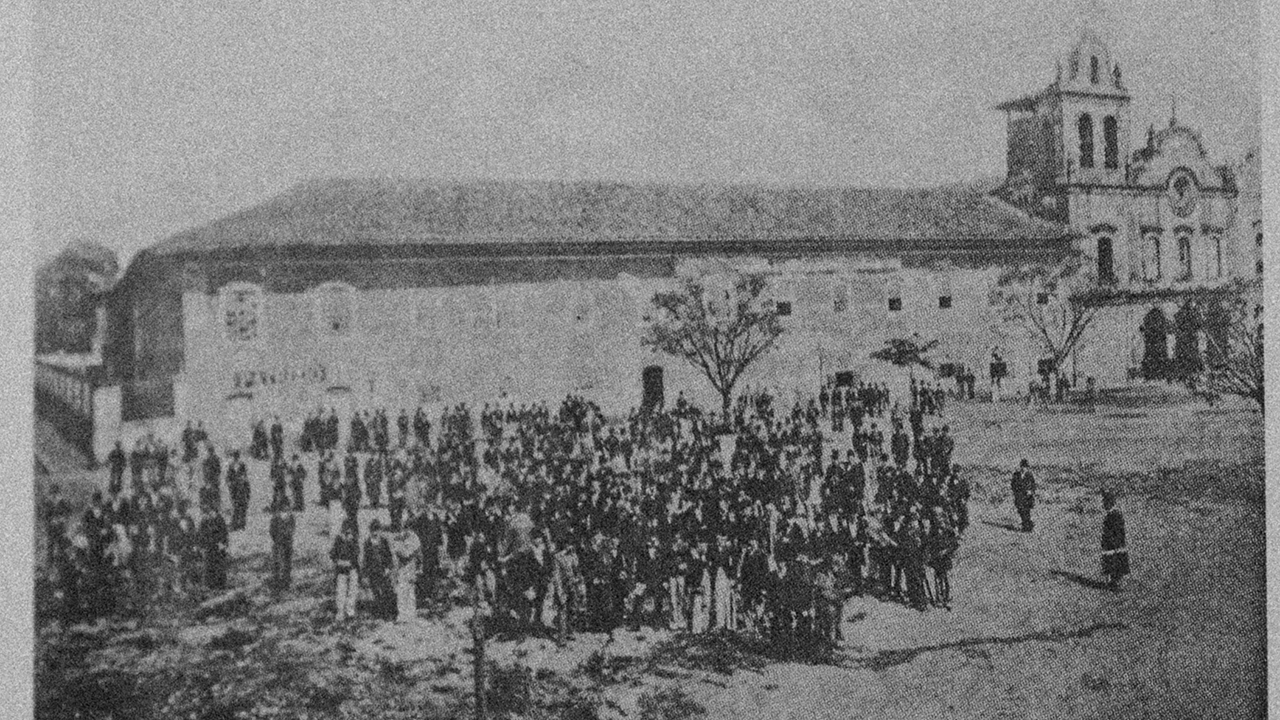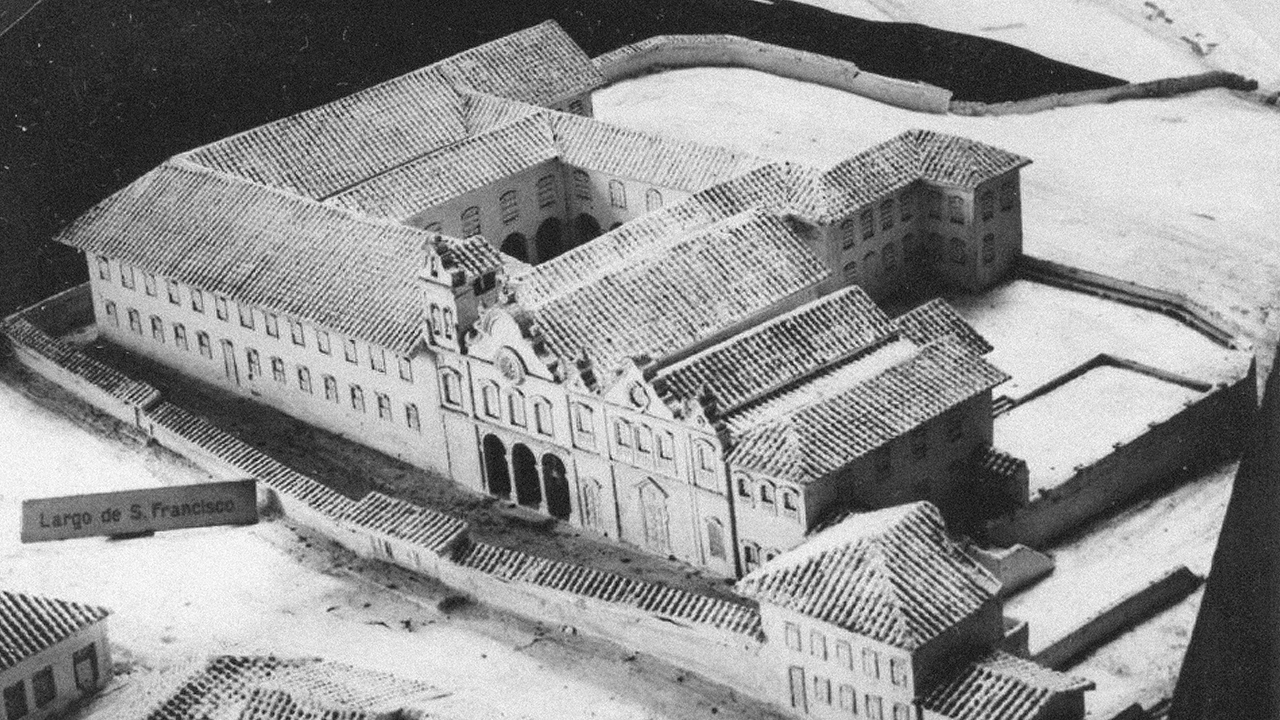Convento São Francisco: 375 anos

O imponente Convento São Francisco, inaugurado por Frei Dâmaso Venker em 1941, não ficou imune a ação do tempo e, com a mudança da sede do Provincialado para a Vila Clementino em 2004, isso ficou mais evidente ainda na última década. Era a hora de reformar e garantir uma vida mais longa a esta casa que é referência e símbolo da Província Franciscana da Imaculada Conceição do Brasil.
As reformas estão no fim e o Convento se tornou também uma casa de encontros e retiros para grupos menores de 40 pessoas, já que disponibilizará 35 suítes nos 3º e 4º andares, além de dois dormitórios coletivos para até 10 hóspedes. A Fraternidade local ocupará o sexto e quinto andares com 19 suítes.
Nos 4º e 3º andares ficam 35 suítes disponibilizadas para encontros, retiros e hospedagem. Todos os quartos terão a mesma estrutura dos quartos preparados para os frades. No terceiro andar, na parte velha, onde atualmente estão as salas de TV e Leitura, a capela interna e a sala de Recreio Santa Clara estão sendo disponibilizadas para encontros e retiros, assim como o segundo andar (o Largo São Francisco está num plano completamente diferente da Rua Riachuelo, onde se situam os fundos do Convento, que na verdade é o térreo se a entrada foi feita pela frente da Igreja), com o refeitório atual. Esses andares poderão ser acessados, além de um elevador antigo, por um elevador novo e moderno.
Ainda no terceiro andar, na outra parte lateral, onde hoje existem capelas missas privadas (três altares com pinturas de Frei Geraldo Roderfeld) e é o trajeto que leva ao coro da Capela principal, abrigará uma exposição permanente de presépios e mais atrás, onde havia a sala antiga da biblioteca, será criado um Memorial a Frei Galvão. “O nosso santo brasileiro, que morou neste Convento por 60 anos, merece ser lembrado aqui”, destaca o guardião Frei Mário Tagliari, lembrando que o belíssimo coro, ainda com suas estalas, ficará aberto para visitação e poderá abrigar exposições também.
No fundo do claustro, funcionam os escritórios do Pró-vocações e Missões Franciscanas. “A atual sacristia está se tornando uma sala penitencial. Com isso, os confessionários que foram construídos provisoriamente no corredor deixarão de existir, tornando o espaço mais limpo. A nova sacristia ficará atrás da igreja e ocupará também a sala que hoje é usada pela Pia União de Santo Antônio. “Já inauguramos no claustro, ao lado da igreja, os novos banheiros que foram totalmente custeados por um benfeitor do Convento”, explica Frei Mário.
Segundo o guardião, todos esses espaços estão sendo revitalizados.
O Convento foi inaugurado, com o nome de “São Francisco e São Domingos”, no dia 17 de setembro de 1647, festa das Chagas de São Francisco. Mais tarde, o Convento passou a ser conhecido apenas como São Francisco.


Monastery of St. Francis
In January 25, 1554, São Paulo city was founded during the celebration of the first Mass, in a wood house – “pau-a-pique”, covered with straw, where the “Pátio do Colégio” is located nowadays. A fight between settlers and religious men resulted in the Jesuits expulsion in 1640. In the same year, a group of seven Franciscans arrived to São Paulo, where they settled in a house in front of the “Ermida de Santo Antônio”, currently “Praça do Patriarca”.
Two years later, with the help from the local population and authorities, in december 24, the friars eamed some land given by the “Câmara da Vila de São Paulo” (The City Council). In september 17, 1647, the Monastery of São Francisco and São Domingos, which was its first name, was founded during the celebrations of the “Chagas de São Francisco”.
The Monastery was the largest one constructed in São Paulo until that time. It used to take up all the area of the “Faculdade de Direito” (Law College). The Monastery land had three pure water springs, but it used to be injured by the “Anhangabaú” river floods.
Until the middle of the XVII century, the frontispieces of the provincial churches werw built in jesuistic style with a low tower. Since then, the baroque style was adopted. In 1884, the church frontispiece was modified. Inside the church there is a vault with allegories from the Franciscan history, painted by Frann Bathe (1951), and there´s also a bell from the XVIII century.
In 1845, The “Irmandade de São Benedito” (St. Benedict´s Brotherhood), which stood for an endeavour of those religious men to incentivate the Christian spirit among the african-brazilian slaves, tried to appeal to the Empire Government to take up the monastery. They even took out the image of St. Francis from the church and replaced it with an image of St. Benedict.
A fire burned the main chapel in 1880. Only the walls and the St. Francis image, which was considered the most beautiful of all old monasteries, were saved. The main altar was bought in Munich, Germany and given by “Irmandade Acadêmica de São Francisco” (St. Francis Academic Brotherhood) which consists os professors and students.
The Church and the old Monastery, where the Law College is currently settled, joined in only one building with an imposing cloister with its five arches on pillars. Its foundations were made ikn “taipa” (mud material), reaching 3 meters below the ground and were 2 meters thick in some points.
St. Francis Monastery present structure, in the bottom of the old church, was built in 1941 by the guardian Friar Damaso Venker. Some improvements were made in the church that time. In 2002, the restoration was approved by brazilian government.

